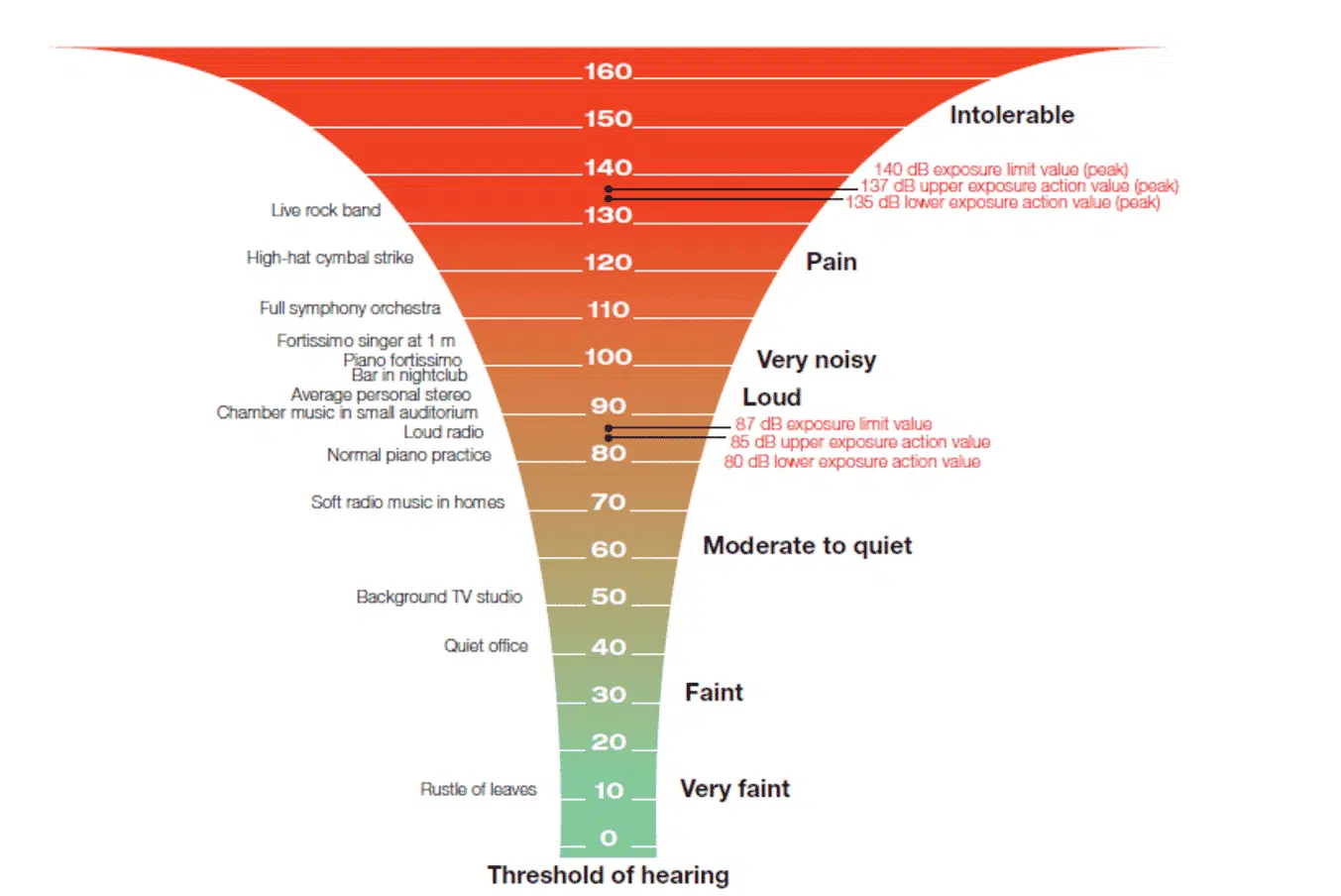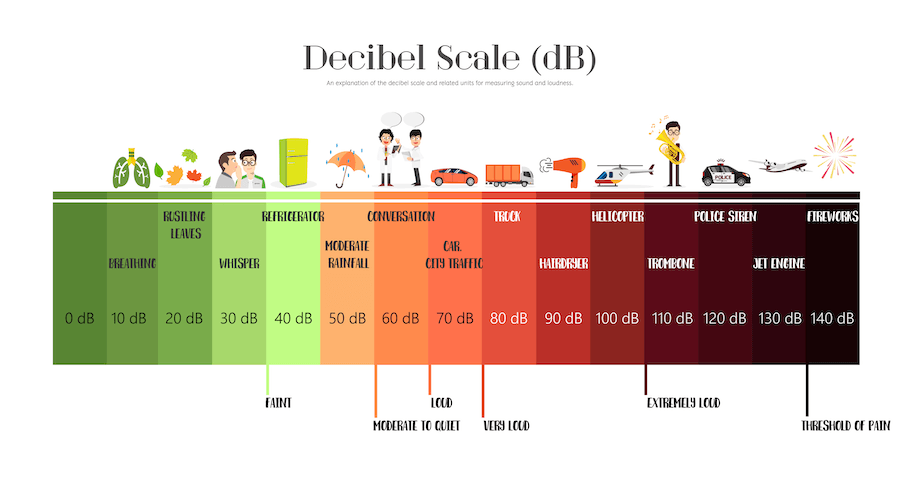


The risk of damaging your hearing from noise increases with the sound intensity, not the loudness of the sound. For example, ten violins would sound only twice as loud as one violin. at the bottom of the page to find sound levels for settings occupational, non-occupational. In general, to measure loudness, a sound must be increased by 10 dB to be perceived as twice as loud. The Noise Navigator: a database of over 1700 noise sources. A sound that seems loud in a quiet room might not be noticeable when you are on a street corner with heavy traffic, even though the sound intensity is the same. The Noise Reduction Rating (NRR) needed for. This noise level chart shows examples of sounds in dBA level ranging from 0 dB to 194 dB. piece of equipment that exceeds 85 decibels (dBA), regardless of duration, hearing protectors need to be used. A sound 100 times more powerful than 0 dB (near total silence) is 20 dB. 10 dB is considered to be 10times more powerful. Loudness refers to how you perceive audible sounds. For example, on the decibel scale, the quietest audible sound is 0 dB. Two sounds that have equal intensity are not necessarily equally loud. Also, the intensity of a sound at 100 dB is one billion times more powerful compared to a sound at 10 dB. This means that a sound at 20 dB is 10 times more intense than a sound at 10 dB. Instead, the intensity of a sound grows very fast. The decibel scale is logarithmic, which means that loudness is not directly proportional to sound intensity. Sound intensity is the amount of sound energy in a confined space. How loud something sounds to you is not the same as the actual intensity of that sound. For more information, visit NIOSH’s website. No more than 15 minutes of unprotected exposure to 100 decibels is recommended. The time estimates listed in the “Typical Response” column are based on the NIOSH exchange rate of 3 dB. A whisper is about 30 dB, normal conversation is about 60 dB, and a motorcycle engine running is about 95 dB. Long Term Exposure To Noise Over 85 dB Can Cause Hearing Loss. Hearing loss possible in less than 2 minutes Hearing loss possible in less than 5 minutes Take a look at this infographic to know all about the decibel (dB), the unit used to measure the intensity of a sound. The maximum volume level for personal listening devices a very loud radio, stereo, or television and loud entertainment venues (such as nightclubs, bars, and rock concerts) Sounds at these dB levels typically don’t cause any hearing damage.ĭamage to hearing possible after 2 hours of exposureĭamage to hearing possible after about 50 minutes of exposureĪpproaching subway train, car horn at 16 feet (5 meters), and sporting events (such as hockey playoffs and football games) Typical Response (after routine or repeated exposure) Sounds and Noises Everyday Sounds and NoisesĪverage Sound Level (measured in decibels) Know Your Workplace Noise Levels If you need to raise your voice to speak to someone 3 feet away, noise levels might be over 85 decibels.


 0 kommentar(er)
0 kommentar(er)
